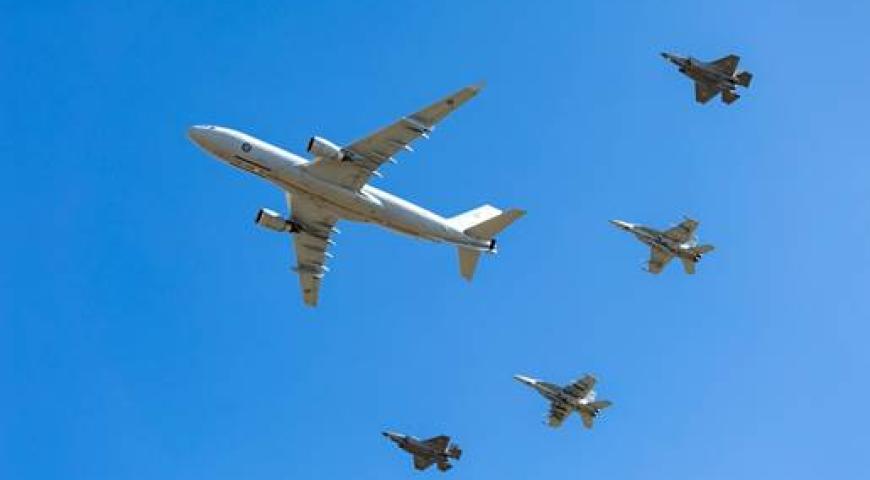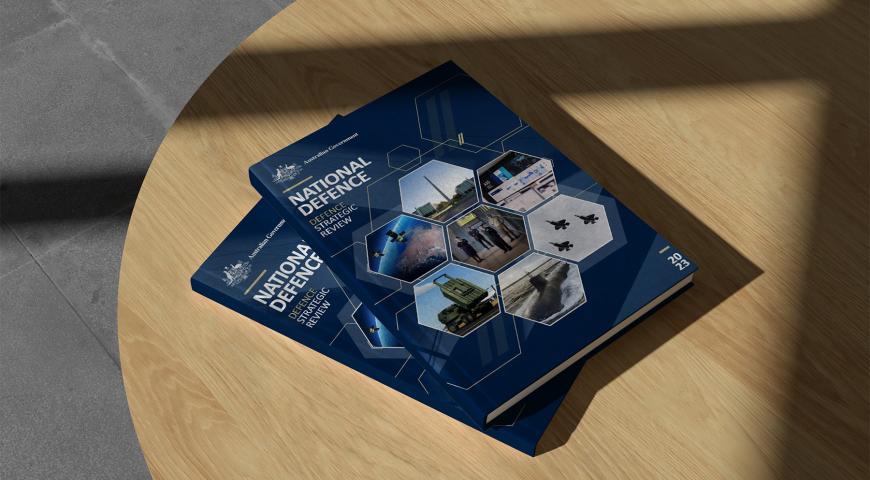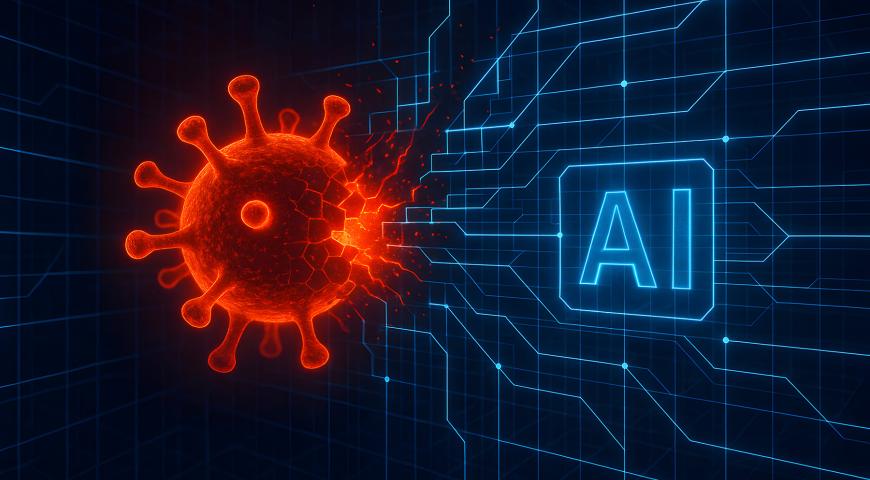Compiled by Wing Commander Jo Brick 1
"One constant across all of military history is the critical role of people. Far more than technology, platforms, or luck, human assets have always been the single biggest determinant of military success or failure. As such, attracting, developing, retaining, and empowering skilled personnel is the biggest challenge for the modern military."
Ref: J. Furman Daniel III, 21st Century Patton – Strategic Insights for the Modern Era
Air Forces are generally techno-centric organisations, and often express themselves through technology. The more advanced, the better! Consequently, much of the discussion about the future of the Air Force centres on artificial intelligence – in either an autonomous or human-machine variant; the networked strike fighter with its sophisticated sensors and weapons suites; advances in technology related to intelligence, reconnaissance, and surveillance; and electronic or cyber warfare. In other words, the focus is on technologies rather than on the humans who will need to lead and fully exploit these capabilities as part of a larger joint force.
There is a need for specific work to create a culture where creativity and innovation, balanced against the discipline for military operations, prepares people to prevail in the uncertainty of future warfare, which inevitably involves pushing the boundaries between peace and war. The challenge for Air Force is to create a level of specificity to provide useful guidance in recruitment, training, education, and development of its workforce to maximise the high end capabilities hat are coming into service in the Royal Australian Air Force (RAAF), and to use those capabilities in a joint and integrated context that is ambiguous and dynamic.
Under the auspices of the ‘Scherger Group’, a small gathering was held in Canberra to discuss some of the challenges of building a future workforce for the RAAF. 2 The discussion from those gathered was both energetic and insightful. While the discussion was based on developing RAAF personnel, it became clear early in the conversation that the same general considerations for developing the human intellectual edge also apply to the Army and the Navy. The intention of this gathering was to have an open discussion on some broad workforce issues, while acknowledging that these problems are going to require significant consideration and framing – to ensure the right questions are being asked, and to look at possible ways ahead. 3
The issues discussed were focused on several key questions:
- What does future conflict look like?
- What will the future Air Force workforce need to look like?
- What skills / knowledge / attitudes do these personnel need?
Future conflict?
Any forecasts that attempt to predict, in detail, the future of conflict and warfare is bound to be wrong. This is reminiscent of the point made by Sir Michael Howard who said: ‘No matter how clearly one thinks, it is impossible to anticipate precisely the nature of future conflict. The key is not to be so far off the mark that it becomes impossible to adjust once that character is revealed’. For this reason, the development of bespoke designs for the future workforce are not likely to be useful.
Contemporary literature and discussions about the future of war commonly refer to a taxonomy of warfare and competition that includes multi-domain battle, hybrid war, cyber war, war in space, the use of artificial intelligence, human-machine teaming, dependency on integrated networks for communication and decision-making; the centrality of time and speed as key features of the future battlespace. This makes prognostication about the future of war incredibly difficult, with any detailed predictions destined to be off the mark.
One characteristic of the contemporary security environment that is likely to continue is the need for cooperation and coordination across government. As Rosa Brooks argued, the military cannot be everything, and the military must continue to work with other government departments – like Foreign Affairs, Home Affairs, Federal / State / Territory police, and the National Intelligence Community – to create a continuity of security and defence efforts to span the ‘grey zone’. A corollary to coordination is to ensure that advice to the Minister for Defence, the Chief of Defence Force, and other Service Chiefs and Defence principals is cognisant of the limits of the military option, and an appreciation of the nuances of strategic environment. If we can acknowledge these requirements, then we can consider some of the broad characteristics required of personnel in the future workforce.
Future workforce considerations
Traditional models, traditions, and the profession. Personnel management for the contemporary Air Force, as all military organisations, is based on stability and certainty, which facilitate long term workforce planning – determining the numbers for recruitment, retention, and retirement. Yet the future Air Force will need more flexibility – to obtain access to the required expertise or services to support the delivery of air power, as directed by the Chief of Air Force on behalf of the CDF / Minister. The flexibility required is analogous to modern fighter aircraft which has a level of inherent instability that enables it to be agile and responsive but has a sophisticated flight control system that provides the stability and control to correct course and trajectory when needed.
The customs and traditions of the profession of arms are important foundations for military forces. The military profession implies rights and obligations in relation to the state, in exchange for the privilege to use of lethal force in times of war. These customs and traditions and the mantle of ‘profession’ are sometimes seen as obstacles to change and the construction of an agile workforce, due largely to the authoritative and hierarchical structures that characterise military organisations. New ways of thinking are required around command and control to establish a culture in which creative / disruptive / heretical thinking is necessary to address novel problems faced in an operational environment.
Team of teams. An important question discussed was: Who is in the team? How do we determine who / what is in the team? One suggestion is to consider ‘Team of Teams’ approach, where the membership of the team changes according to who/what is required to add value to the goals of the team? A ‘team of teams’ approach is one involving a network based on trust relationships that has a shared consciousness / a shared mission. The concept was articulated by Gen. Stanley McChrystal, based on his Joint Special Operations Command experience. It is one that can perhaps best accommodate inter-agency / industry partnership / inter-governmental approaches to national security problems in a much better way than traditional hierarchical organisations. To establish this approach, relationships of trust and habits of cooperation and coordination are essential to ensure that the team of teams is agile, adaptable, and responsive.
Trust and teaming. ‘Trust’ in teams is essential to creating a culture of agility and adaptability in a human workforce. The introduction of machines to the ‘trust’ proposition also becomes important when considering the future workforce. The issue of human-machine teaming is one that is the subject of considerable contemporary discussion, and one that will only become more important as capabilities with varying levels of artificial intelligence are developed. How will the future workforce interact with these sophisticated capabilities as other team members? What kind of people do we need to develop, maintain, and use these technologies? In a networked team of teams, who is accountable and responsible for decision-making – where does ‘command responsibility’ reside?
Buy / build / borrow. Relationships with industry are becoming stronger today, due largely to the increased reliance on highly specialised skills for maintenance, the difficulties of managing ‘commercial-in-confidence’, and foreign military sales restrictions relating to intellectual property and security classifications as part of capability sustainment. This raises the question of proportion of workforce required in uniform, versus the numbers of contractors from industry partners, for the sustainment of RAAF platforms like the Joint Strike Fighter. It is likely that the JSF experience will become the norm, and will likely dictate the need for skilled uniformed workforce required for sustainment of such sophisticated weapon systems. The ‘team of teams’ approach will therefore likely involve these industry partners.
An associated issue is ‘supply and demand segmentation’ as a driver for RAAF workforce planning. The questions underlying this issue are: What will contractors do? What will military personnel do? Some people take time to ‘build’ and ‘grow’ because of their specialist skill sets in a military context. However, some skills can be ‘bought’ via industry partnerships or contractor support because there is a significant civilian sector market for these people. What proportion of the RAAF can be ‘bought’ or contracted, and which ones do we need to ‘build’?
One example provided related to the doctors and medical staff that were incorporated into the British military from the British National Health Service. This was considered a more efficient and effective means to access highly experienced and skilled doctors, nurses, and other medical specialists in a limited time frame for a particular operation, particularly when considering the significant lead time in ‘growing’ these personnel within the military. The NHS also obtained benefits from this arrangement, as their personnel gained unique experience in handling battlefield injuries and trauma.
Considering all the factors discussed above, perhaps the RAAF must be guided by the Lego approach – that ‘people don’t have to work for us to work with us’. However, this ‘open innovation’ approach taken by Lego was the result of declining profits that necessitated change. Military organisations lack the imminence of such signalling to advance reform, with dire security situations leading to conflict manifesting in short time frames when such reforms are too little too late. ‘Open innovation’ requires risk taking and novel approaches that are underwritten by leadership that recognises that we cannot wait for the dire security circumstances to drive change, and that some trial and error of innovative approaches are required now to address the challenges of the future.
What skills / knowledge / attributes do future personnel need?
As flagged at the start, the future is likely to have similarities to the contemporary context. Addressing future challenges require cooperation and coordination outside the military domain, particularly if a ‘team of teams’ approach is to be taken. This demands personnel who are adaptable, resilient and innovative networkers who can operate on the basis of intent in a decentralised context. Assuming the organisational structures and cultures are in place (noting the complexities of workforce structure discussed above), what skills / knowledge / attributes does the future Air Force member need? In broad terms, intelligence, creativity and innovation, as well as strategic thinking and the ability to work in diverse teams (emotional intelligence) were considered to be the foundational skills / knowledge / attributes for future personnel.
Ender. In discussions with fellow sci-fi loving military officers, Ender Wiggin – the protagonist in Orson Scott Card’s Ender’s Game, is often heralded as the epitome of the creativity, innovation, and resilience that is desirable in a future military personnel. In their National Defense University paper, ‘Finding Ender’, Bryant and Harrison explain that Ender’s Game is ‘also a parable for defense policymakers who are confronting the multifaceted problem set of recruiting, training, educating, and retaining military personnel capable of fighting and winning the Nation’s wars in a time of technological change and international volatility.’ Bryant and Harrison argue that fundamental changes to the military organisation’s process and culture are necessary to find the Enders, and propose the development of sophisticated talent management systems to do so.
Talent management is in its nascent form in the RAAF, which is founded on the development of officers and airmen in specific specialisations – pilot, mission aircrew, logistician, engineer, aviation technician, clerk, imagery analyst, personnel specialist, legal officer, medical officer, intelligence officer, and so on. The talent management system is intended to find the ‘Enders’ amongst the specialists – perhaps as a way of finding those to develop outside of their ‘stovepipes’ for broader roles including strategic level leadership. The difficulty is the habitual and cultural sentimentality and assumptions attached to certain specialisations – primarily aircrew – that place them at the centre of the organisation. Each of the Services has their own similar type of biases. The problem with this approach, and one that talent management may be able to mitigate, is that creativity, innovation, and resilience – the ‘Ender traits’ – are fundamentally human ones that are not exclusively bound to the DNA of certain specialists. To maximise the ‘human’ capital of the current and future Air Force, then the personnel development and talent management systems need to focus on the ‘humans’ rather than the specialists.
Education / learning / play and failure. A fundamental aspect of preparing the current and future workforce for the challenges of future competition and conflict is professional military education. This ‘Intellectual Edge’ is considered to be important in maximising the technological advantages that may accrue to a smaller force. Traditionally, education raises connotations of traditional classroom lectures and discussion. While this is still the case, there is also a place for learning through play / testing and managing failure via wargames and wargaming as being a regular part of individual and collective training and education. Such mechanisms provide for a safe place to push concepts to breaking point, find weaknesses in plans, and to develop ways of thinking and strategic acumen.
Culture. Finding Ender is only half the solution. The other half is to create an organisational culture where such individuals can thrive. In traditional, hierarchical, military organisations, uniformity and conformity are prized and oddities are assimilated or discarded. These traditional ways of thinking about developing personnel naturally come into conflict with the need to grow people who are creative and innovative, and are expected to consider and develop novel approaches to the complexity of future competition and conflict.
Established norms and status quo policies and practices must either evolve or ‘break’ to allow the novel idea or concept to take hold. This is perhaps the traditional tension between Daedalus and Icarus, which is often discussed in air power circles. In his Air & Space Power Journal article, Trew argues that ‘air mindedness’ for the future Air Force will require holding the characteristics of Daedalus (experience and wisdom) and Icarus (passionate, rebellious artist) together in creative tension. Leadership is necessary for this to be successful – leadership provides the guidance /intent / direction and underwrites the risk of Icarus’ creativity and drive, which are both broadly considered necessary to address future competition and conflict.
Next steps?
In a recent CAF Directive (10 May 2019), Air Marshal Davies identified a number of ‘Fifth-Generation Behaviours’ that highlights the attributes of personnel that are necessary to support the Fifth-Generation Air Force. AIRMSHL Davies said that these behaviours ‘will ensure Air Force can successfully operate in a complex environment where airmen will need to work with high volumes of data, understand and embrace new technology and easily integrate with Army, Navy and Coalition partners to create a joint effect’. He also mentioned the need for agility to use these behaviours . A ‘People Capability Attributes and Behaviours’ diagram depicted the five core attributes for a Fifth-Generation Workforce – Agile / Informed / Collaborative / Resilient / Integrated.
These characteristics form a good foundation on which to build the future workforce – it is an aspirational goal for the Air Force to work towards in dealing with its personnel. However, as discussed in the group, the difficulty will be in the transition – in changing the existing structures, culture, and attitudes within the Air Force and the wider Defence organisation, to get to where CAF needs us to be.
As a final thought, we also need to think outside of ourselves if we are to be successful in transitioning to a new structure and culture that cultivates the personnel we need. As renowned educator and advocate for reform of the education system, Ken Robinson, stated in Out of Our Minds ‘Employers say they want people who can think creatively, who can innovate, who can communicate well, work in teams and are adaptable and self-confident.’ The Air Force and the ADF want the same characteristics in people as employers in the civilian sector. There needs to be a recognition that the Air Force, and the other Services / Defence generally, cannot expect to create the people to enable a Fifth-Generation Air Force alone. The ADF and the Defence Department are constituted of people from wider Australian society. This means we are subject to wider societal and demographic factors that impact on how Australians live and work. We are also at the whim of factors we cannot fully control: we are reliant on advances in technology and expertise in the civilian sector and we need to stay in touch with such developments. Perhaps more importantly, the ADF is reliant upon the broader education system as a feeder for our membership – we cannot build our future workforce on poor foundations.
- Facilitator for this session of the Scherger Group.
- 2 The ‘Scherger Group’ is a network of individuals motivated to constructively engage with key strategic issues to improve the depth of understanding and quality of advice to senior decision-makers. The Group provides a mechanism, independent of existing organisations, to bring together a diverse array of individuals with the specific expertise, qualities, and motivation to cultivate professional depth in areas of strategic importance and provide alternative perspectives to those developed through existing institutional norms.
- This note is based on the key points raised in the course of discussing the questions below. I have attempted to group together the key points based on the notes I took during the discussion. Any errors are mine. I have also added additional material and references where I have considered that they may contribute to the ideas discussed at the workshop.
Defence Mastery
Technical Mastery
Please let us know if you have discovered an issue with the content on this page.
Comments
Start the conversation by sharing your thoughts! Please login to comment. If you don't yet have an account registration is quick and easy.




